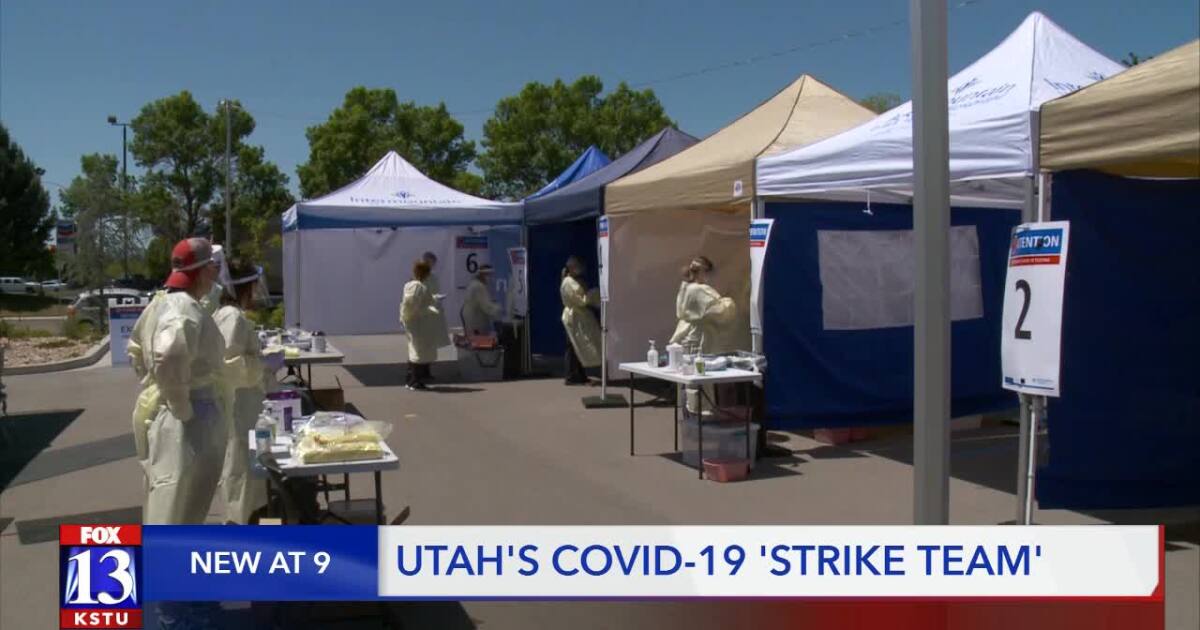
SALT LAKE CITY — State of Utah health officials mentioned the word "plateau" on Monday afternoon during the daily COVID-19 press briefing. For the healthcare workers and first responders that make up the Utah Health Emergency Response Team (UHERT), it’s an opportunity to take a quick breath.
“Any incidents plateau... One, it means it’s not over, and two, it means maybe we have a minute to breathe,” said Kevin McCulley, Preparedness and Response Director for the Utah Department of Health.
McCulley, who is detailed to Utah’s Unified Command a part of the Unified Coordination Group, oversees the medical "strike teams" that are currently working in response to COVID-19.
“The ‘strike teams’ are actually composed of EMTs, paramedics, nurses, doctors, and a variety of different individuals that have disaster response experience," he said.
Strike teams have been deployed to various care facilities across the state. Not all of the deployments resulted in drastic response to COVID-19 but served as a way to educate and guide the facilities to be prepared. UHERT operates under the Bureau of Emergency Medical Service and Preparedness.
“This UHERT team is first responsible to ensure the readiness of the Expo Center should it be needed to put patients in, and second they have developed competencies within this group to actually provide support to facilities that are being impacted by outbreaks within their four walls,” said McCulley.
What might be surprising for some to hear, the UHERT team isn’t a large-scale operation in terms of numbers.
“It’s a very small group. We’re not talking a dozen people, we’re talking three to four people, minimal impact but they really have a couple of primary missions,” said McCulley.
The strike team members assess the facilities that they’re called to, provide guidance to the healthcare work force already working there and provide an overall assessment of cleanliness and ways to mitigate the spread of COVID-19.
"We've deployed them to Utah County, specific to a long-term care facility, and we've had mobile testing surge in our Navajo Nation down in San Juan County,” said UDOH Epidemiologist Dr. Angela Dunn at Monday’s briefing. “We haven't had need to do additional at this point."
According to McCulley, the Utah County long-term care facility is still considered an active deployment at this point but there aren’t any physical ‘strike team’ members working on the grounds. The UHERT teams are continuing to provide guidance to that location.
Specifics on strike team involvement in Navajo Nation were not available.
“There needed to be a more sustained assistance provided over a period of time to these individual groups and entities that not every situation is going have a quick fix with guidance,” said McCulley.
The future of UHERT teams indicates that COVID-19 response could be mixed with other seasonal emergency response such as wildfires and potentially other seasonal viruses come fall 2020.
“It certainly could become more complex if you talk about adding COVID to RSV to Flu outbreaks and to other respiratory viruses,” said McCulley. “I think that people should understand that this is a long term response... The provision of public health is ensuring that access to care and treatment to COVID, particularly for Utah’s vulnerable population, may continue to be a focus for months, if not longer, as we continue to seek appropriate vaccines and appropriate treatment for folks.”
"strike" - Google News
May 12, 2020 at 10:49AM
https://ift.tt/2SSVZ2E
'Strike Teams' work to eliminate COVID spread in 'hot spot' areas - fox13now.com
"strike" - Google News
https://ift.tt/2WheuPk
https://ift.tt/2VWImBB
Bagikan Berita Ini














0 Response to "'Strike Teams' work to eliminate COVID spread in 'hot spot' areas - fox13now.com"
Post a Comment